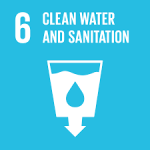Crescent Sustainability Initiatives
Partnerships for the Goals (SDG 17)
B.S. Abdur Rahman Crescent Institute of Science and Technology (BSACIST) demonstrates a strong commitment to achieving Sustainable Development Goal 6 (SDG 6) – Clean Water and Sanitation. The institute has developed a comprehensive water management strategy that includes efficient sourcing, treatment, and conservation practices. Utilizing diverse water sources such as reverse osmosis (RO) systems, bore wells, and an extensive rainwater harvesting system, BSACIST ensures a sustainable supply of clean water for its community. The integration of advanced technologies, including IoT-based monitoring systems, further enhances water usage efficiency and promotes responsible consumption across the campus.
In addition to its water sourcing and treatment initiatives, BSACIST actively engages in community outreach programs aimed at promoting conscious water usage. The National Service Scheme (NSS) volunteers have played a pivotal role in educating the local community about the importance of water conservation through hands-on initiatives, such as pond clean-up drives and workshops for primary school students. These efforts not only improve local water sources but also foster a culture of environmental responsibility. By aligning its practices with the principles of SDG 6 and engaging the community, BSACIST sets a benchmark for other educational institutions, showcasing how proactive initiatives can lead to lasting change in water management and conservation practices.
A. Water Consumption Tracking at B.S. Abdur Rahman Crescent Institute of Science and Technology
Water is an essential resource for educational institutions, and effective tracking of its consumption is crucial for sustainable management. B.S. Abdur Rahman Crescent Institute of Science and Technology (BSACIST) has implemented a comprehensive water management strategy that includes monitoring water sources, consumption patterns, and treatment processes. This report synthesizes data on the total volume of water used at the institute, focusing on various sources such as mains supply, desalinated water, and natural sources like rivers, lakes, and aquifers.
Water Sources and Supply
BSACIST relies on multiple sources for its water supply, ensuring a diverse and sustainable approach. The primary source includes raw water from private suppliers, which is transported via tanker lorries, contributing a total of 27,734 m³ during the 2022-23 period. Additionally, the institute has three bore wells and three open wells that collectively extract approximately 5,000 m³ of water annually. This water undergoes regular testing to ensure it meets drinking water standards. Furthermore, the campus is equipped with five water treatment plants that process water for various uses, including toilets, hostels, and staff quarters, ensuring safety and quality.
The main source of water supply for the Institute includes,
- RAW WATER FROM PRIVATE SUPPLIERS (EXTRACTED FROM RIVERS, LAKES AND AQUIFERS):
The water is transported to the Institute by means of Tanker Lorries.

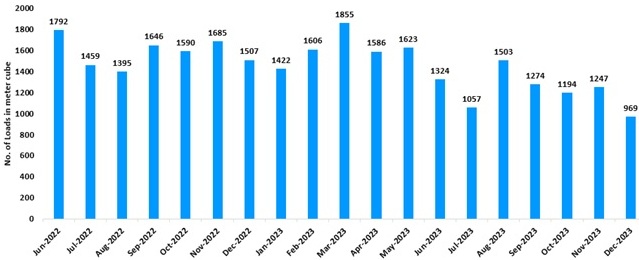
Figure XVII (3.6) – 1: The total number of loads for the period 2022-23
- UNIVERSITY – OPEN WELL & BORE WELLS:
The water required is also met by extracting the water from the bore wells (3 Nos) and open wells (3 Nos) facility available in the Institute. The Annual Extraction of Water is 5000 m3 per year. The Institute also ensures that the quality of water obtained from the private supply and also from the well meets the drinking water standards by frequently conducting the water quality test.
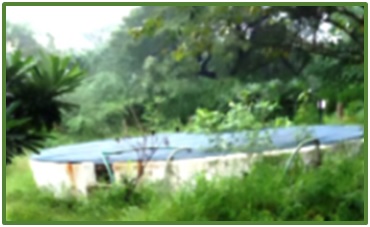
Figure XVII (3.6) – 2: Water extraction from Open wells


Figure XVII (3.6) – 3: Water extraction from Open wells for the period 2022-23
Water Consumption Data
The total water consumption for the academic year 2022-23 reflects the institute’s commitment to responsible resource management. With a total population of 10,919 individuals, the overall water consumption averages 146 m³ per day, translating to an annual total of 22,09,420 m³. The breakdown of consumption reveals that faculty members, staff, day scholars, and hostel residents all contribute to this figure, with day scholars alone consuming around 95 m³ daily. This detailed tracking of water usage allows the institute to identify patterns and implement strategies for conservation.
- Water Usage Breakdown: The diagram provides a snapshot of daily water consumption, which averages 146 m³. Consumption is categorized into different sectors:
- Staff quarters
- Day scholars
- Hostels
- Kitchens and general workers
- Faculty staff and estate staff
Water Treatment and Sewage Management
Effective water treatment is crucial for ensuring safety and sustainability. The institute’s water treatment plants demonstrate efficiency in processing both lorry water and well water. For instance, in June 2022, 1,792 m³ of lorry water was treated, resulting in 1,613 m³ of usable water. The sewage treatment plant at BSACIST has a capacity of 250 kiloliters per day and operates at a 90% efficiency rate, treating a total of 21,212 m³ of sewage generated annually. The treated sewage is repurposed for gardening, flushing, and housekeeping, showcasing the institute’s commitment to recycling and sustainable practices.
Future Initiatives
B.S. Abdur Rahman Crescent Institute of Science and Technology exemplifies a comprehensive approach to water management, utilizing multiple sources and ensuring quality through regular testing and treatment. The data collected highlights the importance of continuous monitoring and improvement of water usage practices, which are essential for future sustainability efforts. By fostering a culture of responsible water consumption and implementing innovative treatment solutions, BSACIST sets a benchmark for other educational institutions in sustainable water management, contributing positively to the broader goals of environmental stewardship and resource conservation.
B. INTEGRATED WATER CONSERVATION STRATEGY
B.S. Abdur Rahman Crescent Institute of Science and Technology has pioneered a comprehensive water-conscious building standard that represents a holistic approach to sustainable infrastructure management. The institute’s strategy goes beyond traditional water conservation methods, integrating advanced technological solutions, regulatory compliance, and innovative management practices. By implementing a multi-dimensional approach, the campus has transformed water management from a mere utility concern to a strategic environmental initiative, addressing critical challenges of water scarcity and resource optimization.
Achieving Edge Certification
B.S. Abdur Rahman Crescent Institute of Science and Technology’s Ladies Hostel, which includes single and triple occupant rooms, has successfully achieved EDGE certification from the Green Business Certification Inc. (GBCI), highlighting the university’s commitment to sustainability and resource efficiency through significant energy, water, and material savings in its building design and operations. For the single-occupant rooms, there is a notable 26% reduction in energy consumption, largely due to energy-efficient features like reflective roofing and solar water heaters, alongside a 28% decrease in water usage thanks to low-flow fixtures, resulting in a remarkable 63% reduction in embodied energy from sustainable construction materials. The triple-occupant rooms reflect similar success, achieving a 27% savings in energy and water usage, with embodied energy in materials reduced by 61%. These accomplishments not only improve living conditions for residents but also align with the university’s broader sustainability goals. The EDGE certification reinforces the institution’s dedication to creating sustainable living environments and sets a benchmark for future construction projects, emphasizing the integration of sustainable practices in architecture and building management. Moving forward, the institute is committed to fostering a culture of sustainability, encouraging awareness and participation among all stakeholders in the pursuit of a greener future.
Environment, Green, And Water Audit Process: A Comprehensive Overview
B.S. Abdur Rahman Crescent Institute of Science and Technology has developed a multifaceted approach to water management, focusing on diverse sources, efficient storage, and effective distribution systems. The institution utilizes a range of water sources, including reverse osmosis (RO) water for drinking purposes, bore water sourced from depths of up to 300 feet at prominent locations such as the Science Block, and multiple open wells strategically placed near hostels and the main canteen. Additionally, the college incorporates lorry water delivered at a remarkable rate of 150 tankers monthly and an extensive rainwater harvesting system (RWHS) deployed across various building blocks to capture runoff and enhance groundwater levels.
The college employs a detailed analysis of its water utilities to optimise water usage and storage, as outlined in a comprehensive report. For instance, the Main Building includes an underground sump with 80 kilolitres (KLD) capacity, supported by robust motor systems that enable efficient water delivery to multiple sub-units, including the MBA and Canteen blocks. In contrast, the Men’s Hostel features an impressive 1,100 KLD capacity, ensuring adequate supply for residents. Regular maintenance is integral to this system, with the management team ensuring that overhead tanks and storage facilities are cleaned every six months, thus guaranteeing the quality and safety of the water supplied throughout the campus.
The institution places considerable emphasis on sustainability, particularly through its rainwater harvesting initiatives. Rainwater is collected from building rooftops and routed via an effective piping system to dedicated pits that promote groundwater recharge. Plans are underway to expand the number of rainwater harvesting pits and conduct GIS studies to monitor improvements in the groundwater table over time. Such measures highlight the proactive role that B.S. Abdur Rahman Crescent Institute plays in enhancing water conservation and management practices while also addressing community needs through increased water availability.
Green Buildings & Certification
- All existing buildings are registered with Indian Green Building Council (IGBC) for green building certification under IGBC – EB rating
- New buildings are constructed over the last six years and those under construction are registered with GBCI EDGE and USGBC LEED for green building certification for Gold rating.
- GBCI-EDGE Green building certification received for New Ladies Hostel & New staff quarters on 23.04.2018.
- Crescent School of Architecture block is conceived as a Net Zero Energy building and registered under USGBC-LEED for Gold rating certification.
Green Building In Construction
Sustainable and eco-friendly campus development has been adopted with following materials
- Grass Crete: Method of laying Grass paver flooring, walkways, sidewalks and driveways to improve storm water absorption and drainage
- Ash Crete: Fly ash (recycled) content with cement is being used for all Reinforced Cement concrete works.
- Low – VOC paints: Painting with low VOC less than 50gm/liter is using for all painting works – Nippon and Berger
- Engineered wood: MDF (Medium Densified Fibre) wood used for interior partition, doors and furniture’s.
- Structural Insulated Panels (SIP): Foam board wall panels are used for prefab structures such as class room and indoor game space.
- Insulated Concrete Forms: GFRC Technology being adopted to construct parent waiting guest rooms and essential staff quarters.
- Steel: Steel roof panels (recyclable) used for workshop roofing.
- Composites: Roof panels made of composite materials such as foam sandwiched between two metal sheets used for prefab class room ceiling.
- Fibreglass: Fibreglass is also used in insulation in the form of Fibreglass batts for interior partition works.
- AAC Blocks: Autoclaved Aerated Concrete blocks (non- toxic product) are used for the construction of all buildings to reduce low environmental impact.
- Thermatek Roof tile: Heat Resistant Terrace tiles are used for all buildings.
- VAV system: Variable air volume HVAC system is adopted to reduce energy consumption.
Edge Green Buildings Audit
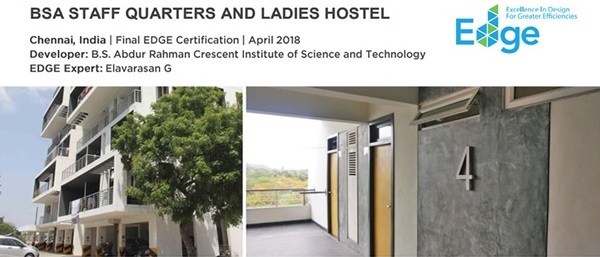
Figure XVII (3.6) – 4: Photographs showing the BSA Staff Quarters
The B.S. Abdur Rahman Crescent Institute of Science and Technology, located in Chennai, has prepared students in India to pursue careers in engineering, science and technology for over 40 years. In addition to inspiring innovation among its students, the university has also chosen to improve its campus by adding green buildings. The new women’s residences and staff quarters have many green features that have all been implemented at no additional cost to the university. When utility bills are taken into consideration, the result is a positive sum gain.
The university has many green features such as solar hot water collectors and energy-saving lighting systems to reduce energy consumption, and UPVC windows to reduce embodied energy in materials. Located in a region that experiences frequent droughts and shortages of water, the university can also conserve its supply of water with the help of low-flow showerheads and faucets and dual flush water closets. The university hopes to use EDGE for future buildings on the campus, to further its resource-efficient and environmentally-friendly approach.
Summary of Edge Certification Reports
The following reports summarize the achievements of various buildings at BS Abdur Rahman University in terms of energy efficiency, water conservation, and reduced embodied energy in materials. Each building has been certified under the EDGE (Excellence in Design for Greater Efficiencies) program, which is an initiative by the International Finance Corporation (IFC).
BSA Ladies Hostel: Triple Occupants Room (28 Units)
Energy Savings: 27%
Water Savings: 27%
Less Embodied Energy in Materials: 61%
BSA Staff Quarters: 28HK Type (18 Units)
Energy Savings: 36%
Water Savings: 21%
Less Embodied Energy in Materials: 56%
BSA Staff Quarters: 38HK Type (27 Units)
Energy Savings: 37%
Water Savings: 20%
Less Embodied Energy in Materials: 55%
BSA Ladies Hostel: Single Occupant Room (91 Units)
Energy Savings: 26%
Water Savings: 28%
Less Embodied Energy in Materials: 63%
BSA Staff Quarters: 28HK Type (18 Units)
Energy Savings: 36%
Water Savings: 21%
Less Embodied Energy in Materials: 56%
C. Three-Day Program Focused On The Conscious Water Conservation Program For Primary School Students In An Adopted Village – Dated: 23.09.2022
The B.S. Abdur Rahman Crescent Institute of Science and Technology is dedicated to promoting conscious water usage, a critical aspect of sustainable living beyond the campus’s confines. Recently, the National Service Scheme (N.S.S.) and Urban Body Association (U.B.A.) organised a three-day program focused on the Conscious Water Conservation Program for primary school students in an adopted village. This initiative engaged over 30 schoolchildren, highlighting the value of education in fostering a culture of water conservation within the community.
The Conscious Water Conservation Program was designed to educate young minds and instil a sense of responsibility towards water conservation. N.S.S. and U.B.A. volunteers played a crucial role in delivering the content, teaching children about the significance of water as a vital resource for life by emphasising the various uses of water, including drinking, sanitation, and agriculture. The program aimed to create a comprehensive understanding of why water conservation is vital in today’s world. This foundational knowledge is essential for encouraging children to think critically about their water usage habits in the future.
Interactive activities enhanced the learning experience, making it engaging for the young participants. Through discussions and hands-on activities, children explored practical methods of conserving water, such as minimizing waste during daily routines and understanding the importance of rainwater harvesting. These interactive components made learning enjoyable and provided students with tangible actions they could incorporate into their lives to contribute to water conservation efforts.
The program extended beyond just educating children; it also aimed to empower them to become advocates for water conservation in their families and communities. The institute aims to create future leaders who prioritise responsible water usage by instilling a sense of environmental stewardship. When children bring these lessons home, they can influence their families’ habits, amplifying the program’s impact throughout the community.
Collaboration with local community leaders and parents played a vital role in the success of this initiative. By promoting the importance of water conservation through community networks, the institute fosters a collective responsibility towards sustainable water management. Such partnerships pave the way for broader outreach and the potential to enact community-wide changes in behaviour regarding water usage.
Looking ahead, the B.S. Abdur Rahman Crescent Institute of Science and Technology is committed to sustaining these efforts to promote conscious water usage within the community. By expanding initiatives like the water importance program, the institute aims to reinforce the knowledge gained and encourage continuous engagement in responsible water management. As the community becomes more aware and proactive about water conservation, it will contribute to a healthier environment and a more sustainable future for all.
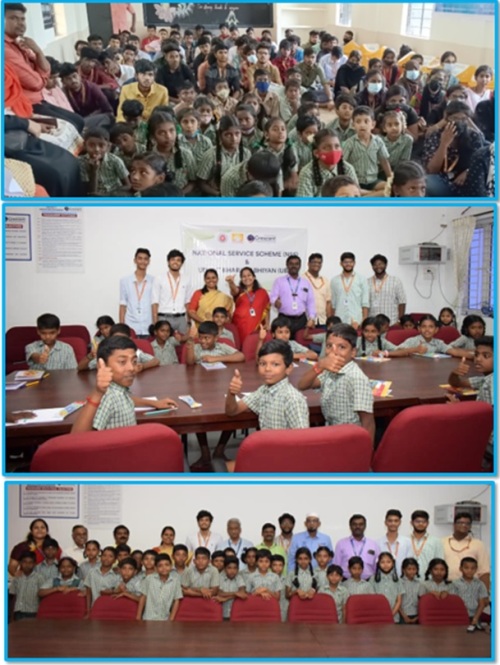
Figure XVII (3.6) – 5: Students actively participate in the three-day Conscious Water Conservation Program
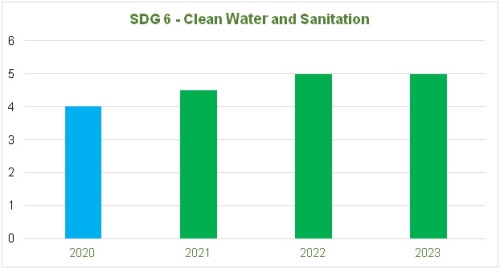
Rubrics for the SDG 6: Clean Water and Sanitation
| 4 to 5 | There is significant progress in effective implementation compared to the previous year |
| 3 to 4 | The necessary processes/activities (Water consumption tracking, Water usage and care, Water reuse, Water management) have been implemented |
| 2 to 3 | There is an explicit plan to address the ‘Clean Water and Sanitation’ and necessitated processes have been initiated |
| 1 to 2 | There is an understanding and willingness to contribute effectively for achieving the UN targets of SDG 6 |
| 0 to 1 | There is no/partial willingness and plan to contribute for achieving the UN targets of SDG 6 Clean Water and Sanitation |
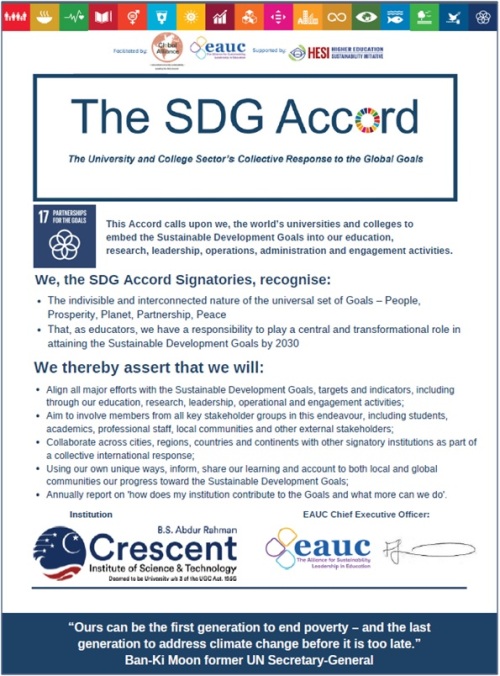
Please find the Report: SDG ACCORD REPORT


